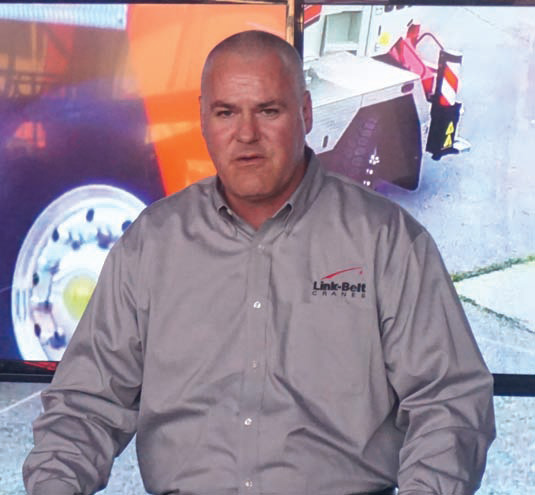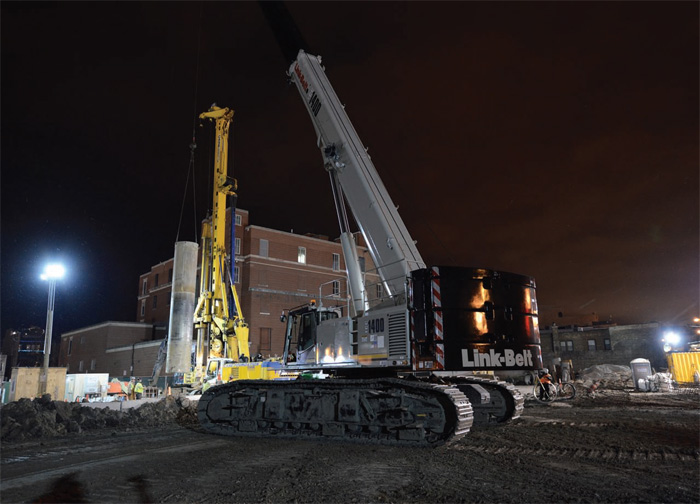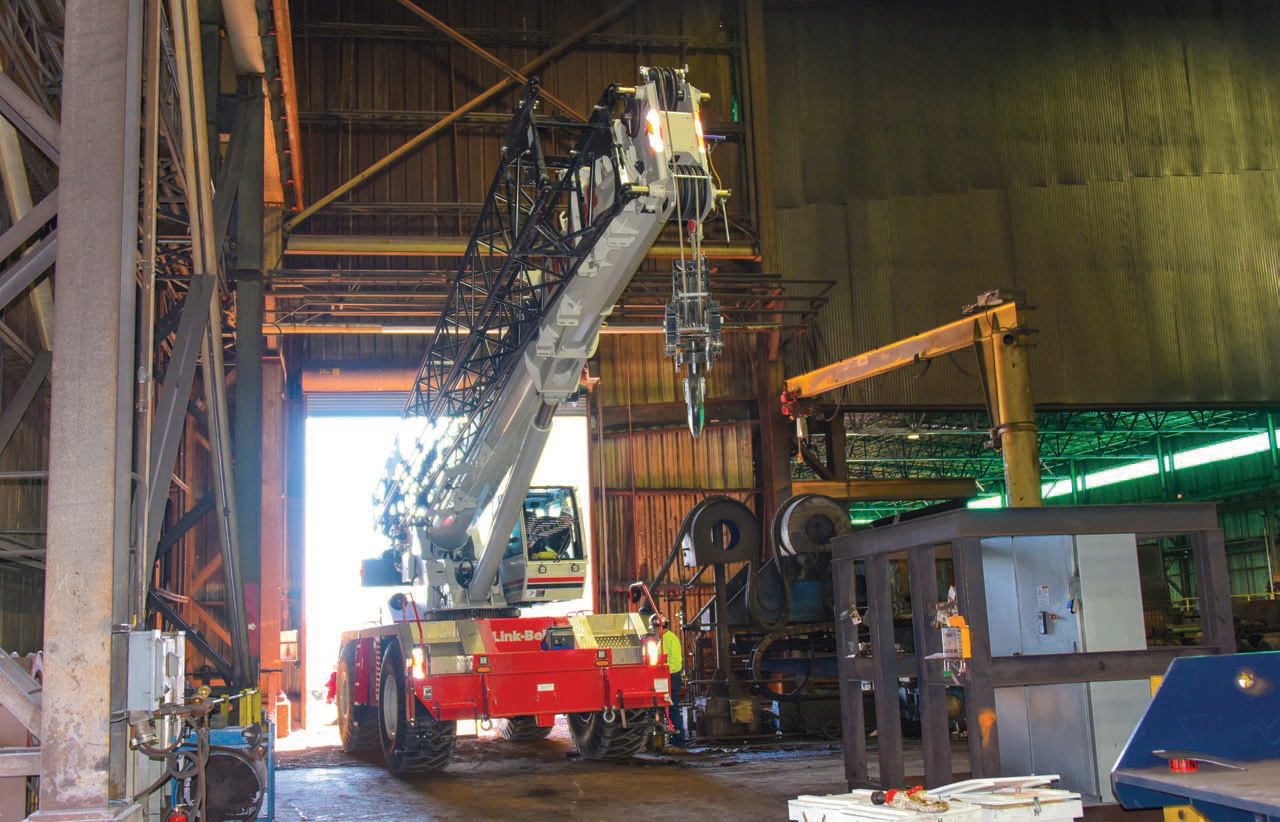Sustainable lifting
20 November 2017Will North spoke to Link-Belt CEO Melvin Porter, as he approached six months in the job, about building a sustainable crane business.
Link-Belt prides itself on having a staff and management team with a long connection to the company.
This was highlighted by departing CEO Chuck Martz as he handed over to Melvin Porter at ConExpo, and a point Porter was happy to expand upon as I interviewed him.
“The crane industry is a relationship business, it’s a small group of people who really know each other, or know of each other. It’s not marketing to billions of customers, it’s to a small group.
“Having that ongoing relationship is important. We’re fortunate here to have a number of seasoned and knowledgable professionals, especially in marketing and sales.
They’ve developeed trust and a bond with our customers. Even customers who haven’t done business with us, know of them, have heard of them.
They’ve met them at the SC&RA or at ConExpo. That bodes well for us. Customers recognise that they are talking to people that know the business, are well-respected, and can give them good information.”
Porter himself has a long history with Link-Belt; prior to moving up to CEO, he was CFO. In his new role, he says, he has more of a day-to-day focus on people, but he was by no means locked in his office prior to this.
“I’ve always liked to walk the shop floor. I did that as CFO. It’s always difficult to find the time, but it really gives you a sense for what is going on and helps develop the relationship with our people that are out there manufacturing this product every day.
“My prior role as CFO, involved in high level meetings, concerning operations and product development, working with the executive staff to set the direction of the company. The volume of this has remained about the same. What has changed is the human resource and administration side, that wasn’t something in my prior position I was involved with, that was handled through Chuck.
“I’ve worked with all my staff, in various capacities here, for 13 years. As CFO, I had a different role, but I have a strong relationship with each one of them and know them well. From that standpoint it’s been a smooth transition. It’s not like somebody coming into the organisation and having to get to know all those people and how they manage and operate. The relationship is already there. For me, it’s been a seamless transition.”
The company builds on that legacy by looking to the long term future. It has recently been investing both in its own capabilities, and in taking a sustainable role in its community.
A key investment was its boombending machine, the only one in the USA, which recently formed its 10,000th boom, for a 140USt TCC- 1400 telecrawler.
Porter says, “You have to look long term. You can’t develop and test products overnight and send them out. [When we bought the equipment] it was a period of rapid expansion in the industry, we were limited by the availability of boom shells.
“Those were coming from Europe, so you’ve got the added time lag in there in terms of having them shipped to you. We started looking long term and saying if we make this investment, what does that mean to us and to our customers.
“When we see a turning point in the business, maybe we can respond a little bit quicker. In the past, having long lead times you would have to defer or maybe lose an opportunity to satisfy a customer’s need.
“When we walk people through our facility and point out all the things we can do, it’s an added benefit to say we manufacture our own formed booms here and if there’s a service issue in the future, we can get you a boom in a reasonable period of time.
“It does happen from time to time that boom sections need to be replaced, and that gives us a capability to respond quickly.”
As well as planning for its own sustainable future, Link-Belt has in recent years invested in environmental sustainability. With his background in finance, I was curious if Porter could see a way to measure the success of this investment.
It’s not simple, but in some ways it is possible. Porter says, “In 2011 we became ISO 14001 compliant. Our parent company [Sumitomo Heavy Industries] has always been very conscientious about the environment and they have given us targets that they would like to see us hit over the years in terms of recycling, paper use, CO emissions.
“There are a few examples of things we’ve done to reach those targets. Some of these are minor, some of them are bigger. We now use returnable pallets. It doesn’t seem like much, but for all the components like axles and engines that are coming in, we’ve worked with suppliers to be able to reuse that shipping material and not create an environmental impact to have to dispose of something.
“We’ve worked to educate our employees, to have [policies] on the boards as far as recycling goes. We have a target to become a zero landfill facility. Right now, we’re at a recycling rate of 98%, so we’ve made a lot of progress over the years, to look at recycling and reusing, to eliminate anything that would go to landfill.
“We had our environmental person and several of our employees go out and actually search through the trash that was going to landfill and see what was there and seek opportunities to improve. It’s one of those thankless jobs that someone does, that helps us understand what was going on and take action.
“We also put in on part of our parking lot a new pervious material to eliminate storm water run off. “When you talk about return, that’s always something that is hard to measure. Some of the things we’ve done, on our utilities, we put in place some automation, so compressors and things aren’t running 24/7.
“The lighting is the same, it’s automatic. That’s somewhere you can see return on investment, in the cost of utilities decreasing as you implement these items. Some of the other things are a little harder to quantify, but they help to provide a higher quality of life in the community we are part of. That’s where you get the return on some of these actions.”


